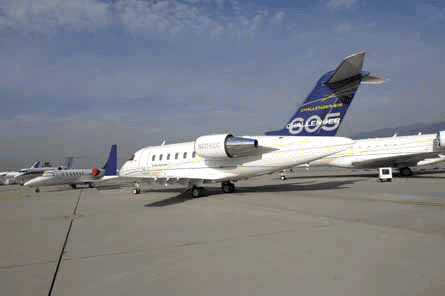“The economy plays a part in sales, and certainly the region is growing well. This has increased demand and there is more need for people to travel. This means we are seeing more Learjets in the region as more companies and individuals find the need for effective regional transportation between Middle Eastern countries,” he says.

This new breed of users differ from traditional Middle East customers as they use business jets for real business use rather than as personal luxury travel tools, and this is boosting sales across the range. “Since the last Dubai air show two years ago we’re starting to sell across the entire range of aircraft. There’s a larger uptake of Learjets and the wide body aircraft are still faring well,” Horner says.
“In the Middle East you have to be aware of the cultural differences and you need to comply with them,” he says. “You need to observe the traditions and peculiarities of the region. I believe we’re sympathetic and strong in that aspect but we’re not arrogant. To support this we have employed a local sales director who is trying to get us in tune with market.”
Horner says the shift in business requirements means he is promoting the Learjet range to a greater degree than before. “The Learjet fits in nicely because it offers cost effective travel. We’re taking the opportunities to actively sell the aircraft, where perhaps before we haven’t emphasised it in the region previously.”
Interest in the new Learjet NXT, which will plug the gap between the Learjet 60XR and the Challenger 300, is “already extremely encouraging”, he adds. Bombardier has already received 65 letters of intent for the new aircraft.
The Middle East market has traditionally favoured widebodied business jets, and demand for the Challenger series is still strong. Bombardier has an installed base of 27 Challenger 600 series aircraft in the region giving it a 50% market share.
“Our widebody aircraft have always done well in the region and certainly with our relationship with ExecuJet and its service centre, they are doing really well. If you look at back at the Challenger 601/604 widebodies they offered long range as well as being economic to operate,” Horner says. “But Middle Eastern buyers are changing. They are more careful about what they buy and also more educated about what they are buying. They really go out and do their research before purchasing. And certainly so far the new Challenger 605 is our best seller in the region, closely followed by the Global Express.”
The charter market also presents opportunities for growth, Horner says. “We’re selling to a growing market there and also the international charter market. People are moving around more than they used to and this is increasing awareness of the advantages of business aviation.”
Horner believes Bombardier’s strategy of offering aircraft in each sector of the market will continue to fuel demand. “We need to plug the gaps and capture customer loyalty early on, and then move them up through the range as their requirements change. Our customers really are our best sales tool,” he says. “The future is very much about having the right product for the market and we’ve invested in products and support with ExecuJet in the region.
At the Dubai air show, Bombardier is displaying its Challenger 605 demonstrator and a Global 5000. “We’ll certainly talk a little about the Learjet NXT. We’ve got a strong uptake of people coming to visit us, certainly more than Dubai two years ago. I was surprised last year by the number of attendees, and this year it’s much stronger,” says Horner.
Back to the rest of Dubai 2007 show news, blogs, and pictures
Source: Flight Daily News























